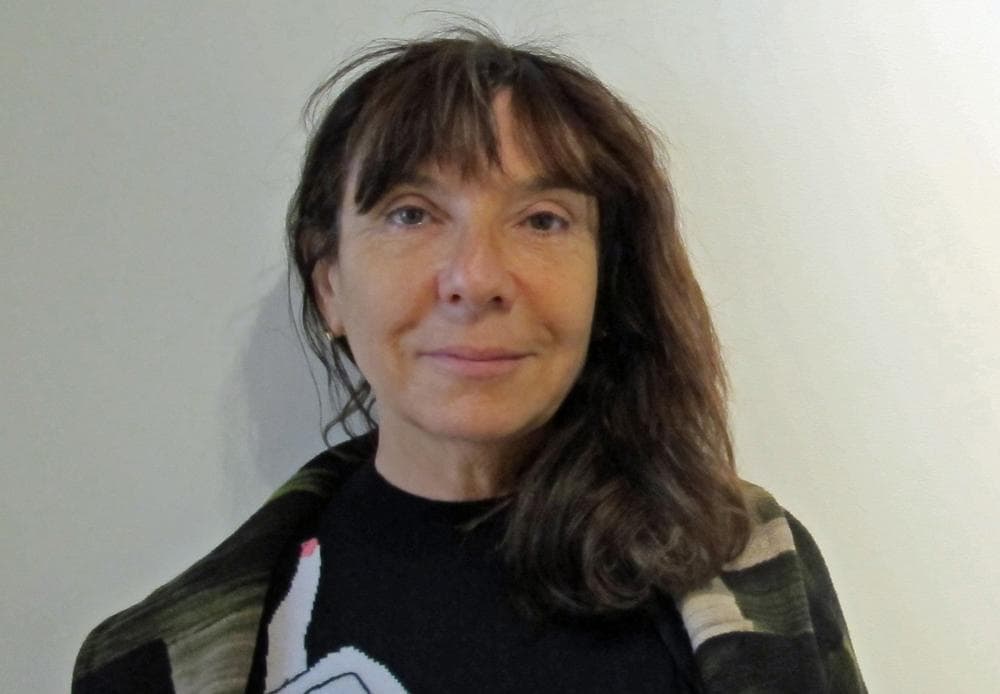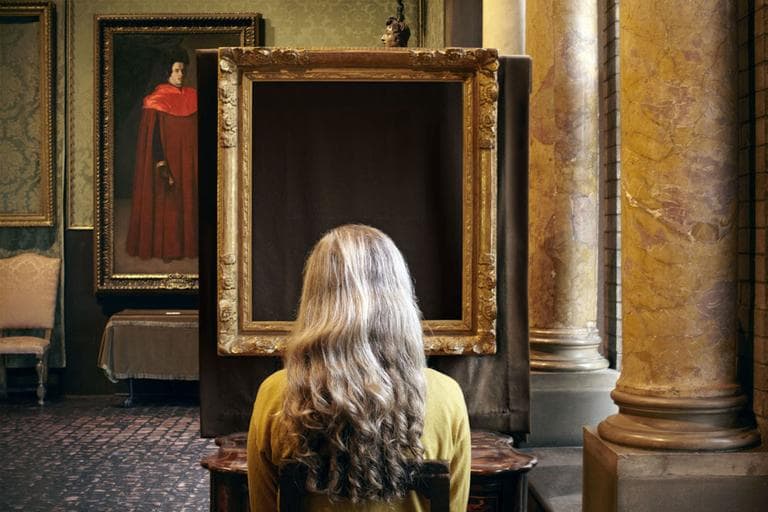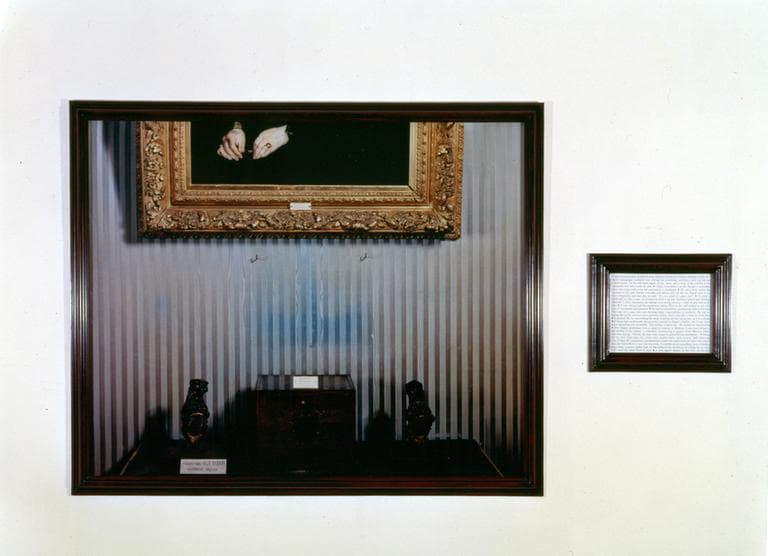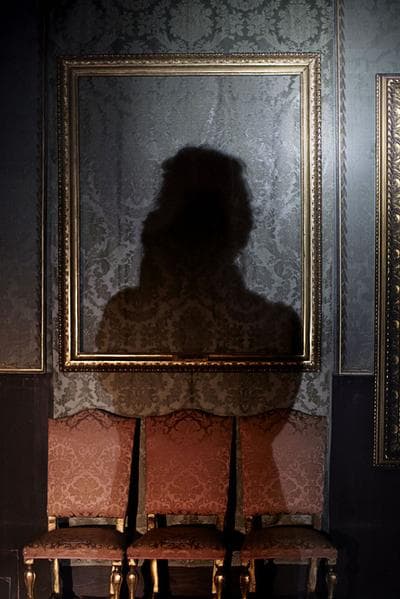Advertisement
Framing Absence: Exhibit Inspired By Notorious Art Heist Opens At The Gardner
Twenty-three years ago, two thieves dressed as police officers pulled off the greatest art heist in American history. They snagged 13 works from Boston’s Isabella Stewart Gardner Museum, including paintings by Rembrandt and Vermeer. The masterpieces are still missing, but now an exhibit inspired by their absence is on display at the Gardner.
The works in "Last Seen," by French conceptual artist Sophie Calle, have been on view around the world, but this is the first time they're at the scene of the crime.
Empty Frames As Potent Symbols
March 1990 was a nightmare for Anne Hawley. She had just started her job as museum director at the Gardner when thieves brazenly assaulted the art-filled Venetian palace. They even cut two Rembrandts out of their frames, including "Storm on the Sea of Galilee." Hawley recalled how shocking and heartbreaking it was.

"The museum was crawling with FBI agents, with press that were coming in from around the world," she recalled. "Also, the museum was experiencing these bomb threats coming from people in penitentiaries that were trying to negotiate with the FBI on information they said they had — and the FBI wasn’t responding to them so they were hitting us. You can’t paint a more difficult time."
Then Hawley got a call from Sophie Calle, a French artist known for her provocative conceptual projects about memory and loss. Her works are personal and probing. Calle told the museum director how just a few months before the heist she had spent a good amount of time standing in front of "The Concert" by Vermeer. The artist was in town for a retrospective at the Institute of Contemporary Art and she loved that painting. She wanted to capture the deep sense of loss.
"It’s a way to deal with it at the same time with some distance, a little irony, just not tears," Calle said this week when she was in Boston for her new show.
Advertisement

Hawley said yes to the artist, and Calle decided to reconstruct the stolen art works through a series of photographs and interviews. She talked to museum security guards, conservators, curators and visitors. Hawley remembers the conversation she had with the artist that would ultimately become part of the series.
"I’ll never forget sitting with her in a chair next to the table where the Vermeer had been placed in the Dutch room, and recalling my memories of that picture," Hawley recounted. "Which of course is a woman and a harpsichord, a man with his back to you who’s playing the lute, and then a woman who is facing you about to sing. And it also has this strange effect on you because it’s people making music, but of course it's silent."
The current exhibition includes anonymous text excerpts from those interviews. They're enlarged on the walls of the museum’s new contemporary gallery and paired with larger-than-life photographs of the stolen arts' empty frames, which still hang in Mrs. Gardner’s historic palace like relics of a bad dream — or hopeful tokens.
In the show’s audio tour, curator Pieranna Cavalchini reads a few of the collected memories:
The beautiful thing about this Vermeer is that you have silence in a concert. You are looking at such stillness and yet you know they're making music. I hear them singing, but it seemed very private and quiet and pure. You felt like an intruder, you wouldn’t want them to know you were watching. I didn’t like it much, not my style.
The real empty frames still hang in the museum’s ornate palace. They’re barren and waiting, like ghosts, Cavalchini mused. The curator says the staff is tuned in to their presence.
"We’re always hoping for the paintings to come back. It’s in our blood, sort of wanting them to come back," she said. "But at the same time, here from this tragedy, this new body of work emerged that’s going to be in existence forever.
"And I think it’s really fabulous that Anne Hawley, our director, had the guts at the time to allow an artist to come in. I don’t know how many other museum directors would’ve done that," Cavalchini added.

Artist Sophie Calle wanted to respond immediately after the art was taken from the museum. Back in 1990 and 1991, when she was working on her series, she saw the empty frames as potent symbols — and she still does.
Last year, she conducted a new round of interviews with some of the same people she interviewed 23 years ago, along with some visitors who wandered by where the paintings used to be. Their thoughts are included in the show under the title, “What Do You See?”
"Some of them see their failure in finding the paintings," Calle explained. "And some of them see the years that went by. And they don’t only see the missing work, they see the time."
Walking around the gallery, the artist considered the paintings’ ghosts. But rather than seeing her exhibition as something that might open a wound, Calle believes it’s therapeutic.
"This way of talking about the absence makes things more present, so, less painful I think," she said.

Calle’s series was created in Boston and has traveled to museums around the world including New York, Brussels and Paris. But it’s never been shown here, at the scene of the crime.
"Frankly, we had no space to show it," director Anne Hawley explained. "But even had we, we were too raw to deal with it."
Hawley told me the museum’s massive 2012 expansion changed that. Now she and the rest of her staff hope Calle’s exhibition will help raise awareness of the ongoing hunt for the missing art works. Some have estimated their worth to be more than $500 million.
"They’re out there," Hawley stated emphatically. "We know they're out there. All we need is for someone to open the door for us to get them back."
Earlier this year, FBI officials announced they’d identified two suspects. Both Hawley and Calle admit they’ve fantasized about the art being returned during this exhibition’s run. It closes March 3.
Listen to the audio version of this story below:
A previous version of this story incorrectly stated that Isabella Stewart Gardner's will stipulated that nothing in the museum be changed after her death. In 2024 the museum issued a statement to clarify that the empty frames hang on the wall because they "remain confident that the works will someday return to their rightful place in the galleries."
